Welding & Its Philosophical Implications
Did you come ready to learn German Phenomenology? No? Well, you're gonna.

Welding & Its Philosophical Implications
As a general rule, car enthusiasts tend towards mechanical sympathy. This is what empowers us to detect new rattles and creaks, or diagnose which unsprung components might be on their way out. It’s also what drives us to feel unprecedented levels of guilt when our vehicles are damaged by our own negligence.
Recently, my father and I put a great deal of effort into my late grandmother’s 1968 Mustang. The sheet metal is entirely original, and arrow straight. It’s a great survivor car, but it's by no means perfect. Thanks to me, that perfection deficit grew a little larger around a month ago.
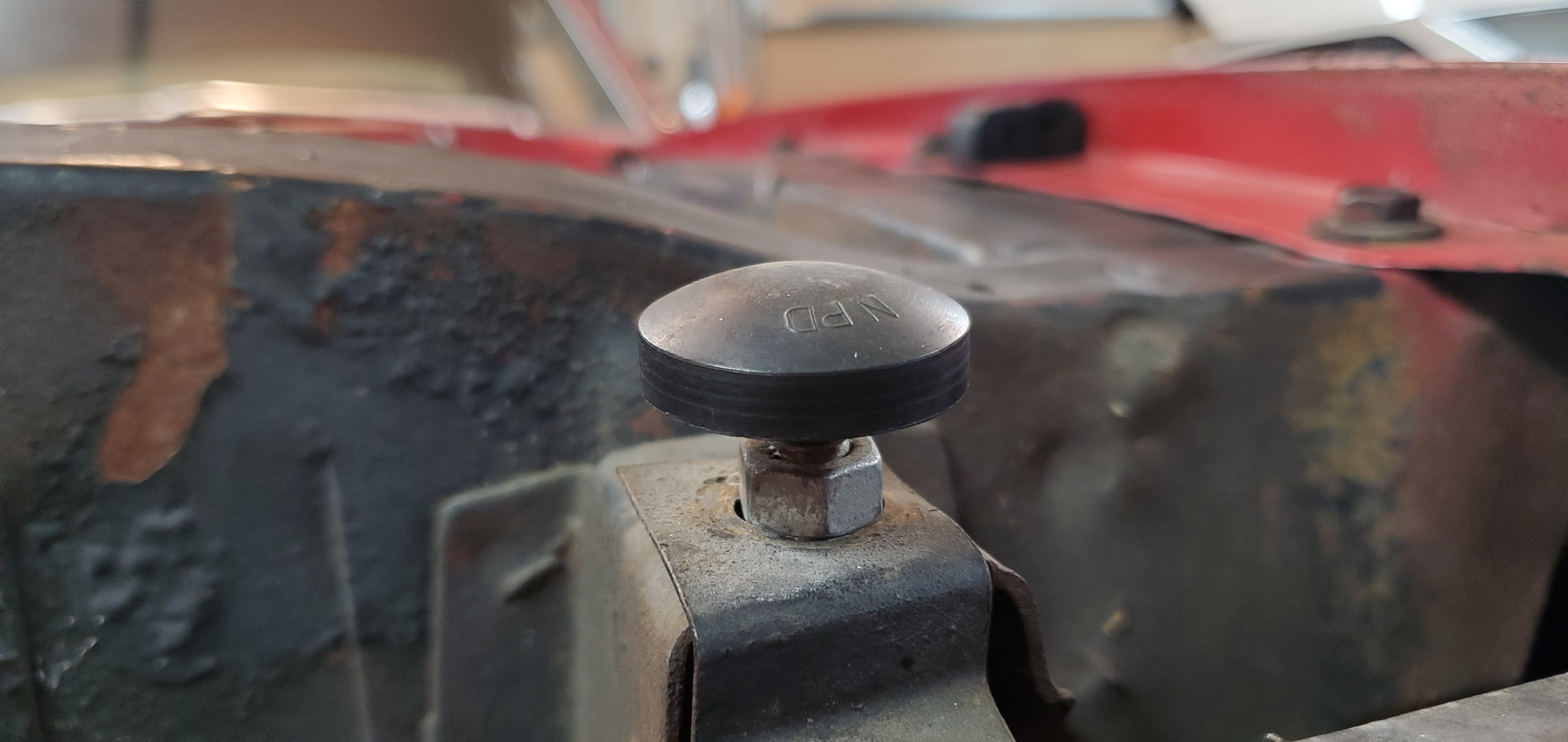
I had taken the Mustang to drop a friend off somewhere, and on the way we noticed that the car's hood wasn’t quite level. Returning home, I inspected the hood, its hinges, and latch. I decided to raise the rubber stoppers (near the grille’s upper corners), which press up against the hood while it's closed. After some trial and error, I was satisfied that the hood would be properly aligned by these stoppers' new height.
I pulled down on the hood to close it for a final time before taking it for a controlled test drive. Reaching the last five percent of its regular range of motion, the hood firmly refused to move any further. With a decisive, downward press, the hood complied and the latch made an audible *click* as it moved into place…
At least, something made an audible *click*, as it moved into somewhere...
Now it was time for that test drive. As the Mustang rolled over neighborhood potholes and uneven pavement, all appeared to be in check. There was no detectable motion in the hood. Turning onto my town's main street, I rolled on the accelerator and approached the speed limit. (35 miles per hour, in this particular section).
I was scarcely doing 30 mph before aerodynamics reared its head, and a strong gust of air found its way into the engine compartment. The hood and latch exacted their revenge for my earlier, decisive press.
My heart stopped as I saw the expansive and sun-faded surface before me begin to lift--first upwards, then directly towards me--as the hood became an effective airbrake. It reached maximum openness and erupted a horrific and hollow-sounding *pop*. Without thinking--or checking for any would-be victims in the Mustang's singular, (driver's side) rear-view mirror--my right foot found the brake pedal and depressed it. The collective weight of its 2,758 pound mass and its 53 year history sloshed forward, along with my big stupid head.
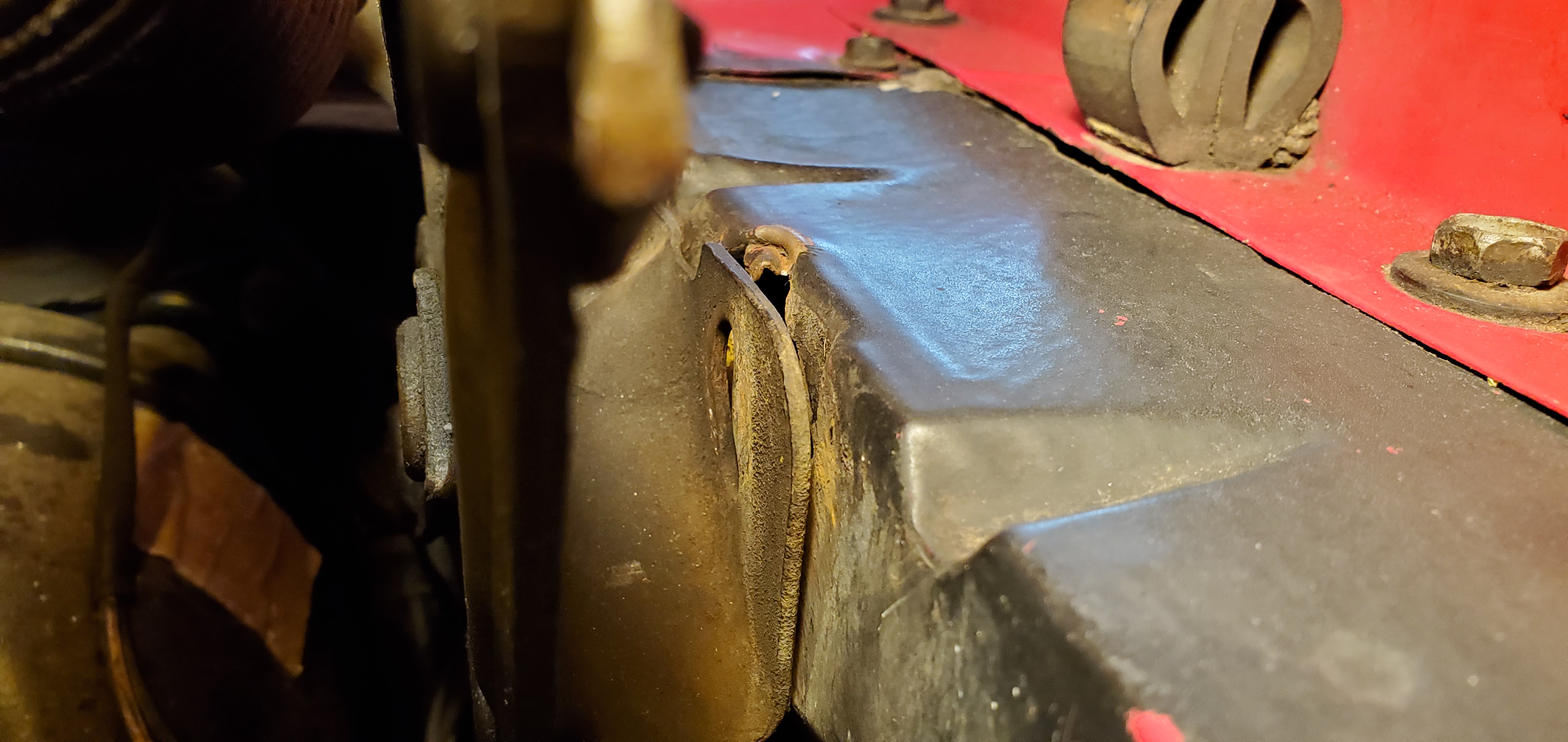
I pulled the car into the shoulder, and rolled to a stop. (Thank St. Edsel nobody was in the lane behind me). In less than a hundred feet, my maladjustments to the hood had torn a captive nut off the driver’s side fender, twisted one of the original hood hinges, and caused me to pinch a hole in the driver's seat.
Nursing the car home, I replayed the whole ordeal endlessly in my head. The sound of that captive nut ripping out of our vintage metal still echoed in my head, and gave me misery for weeks. My dad had warned me that the same thing had happened to him some 30 years earlier--only he got away without any damage. He wasn’t mad about it happening to me this time; after all he’d made the same mistake before. Only this time there was damage, and it was hard to look at.
Where the fenders and the hood once had panel gaps, they now had panel scrapes. When the hood was closed, the hinges would creak in protest. When the hood was opened, the hinges would groan and cry, knowing full well that they would eventually have to close the hood again. Since every motion of the hood risked damage to the hinges, the car sat motionless for a while. As a result, the entire car started to become present-at-hand before my eyes.
A German philosopher of phenomenology, called Martin Hiedegger, coined the terms present-at-hand and ready-to-hand in a Philosophical work called Being in Time. These two phrases describe the way that we humans, as perceivers, recognize objects. When an object is ready-to-hand, we see it as something useful, and we’re incapable of separating it from our potential uses for it--when we see a hammer, we also see the potential for hammering. When something is present-at-hand, we see it as an object in a world of things--a broken hammer has no use to us; we see it not as a hammer, but as pieces of metal and wood. (Y’know, when he wasn’t busy being a total dirtbag/literal Nazi, Hiedeggar wrote some very good stuff.)
The car enthusiast is not a stranger to the implications of ready-to and present-at-handedness. For example, a mechanic sees a bolt as something which fastens two objects together using torque. However, if a mechanic should start to round a bolt off, the bolt looks less like a bolt and more like a thing. As the bolt grows rounder, the amount we perceive and treat it like a bolt decreases. The amount we perceive and treat it like a physical obstacle increases.
For the car enthusiast, a roadworthy vehicle is the ultimate expression of ready-to-hand. When we look at a car, most of us don’t see a collection of parts--bolts threaded through nuts; clips snapped into place; two thousand or more pounds of metal and plastic. Rather, we see places we can go--places we have been, things we can do, experiences we may have in and around the vehicle.
By the same token, when a car breaks it can be strikingly present-to-hand. Given the right incident, a car can wither into a large, expensive, and painful ornament. Particularly if there are mechanical difficulties with repair, we will see the car as a collection of parts--rounded bolts cross-threaded through rusted-over nuts; broken clips failing to fulfill their purpose. Confronting these consequences is difficult, but necessary.
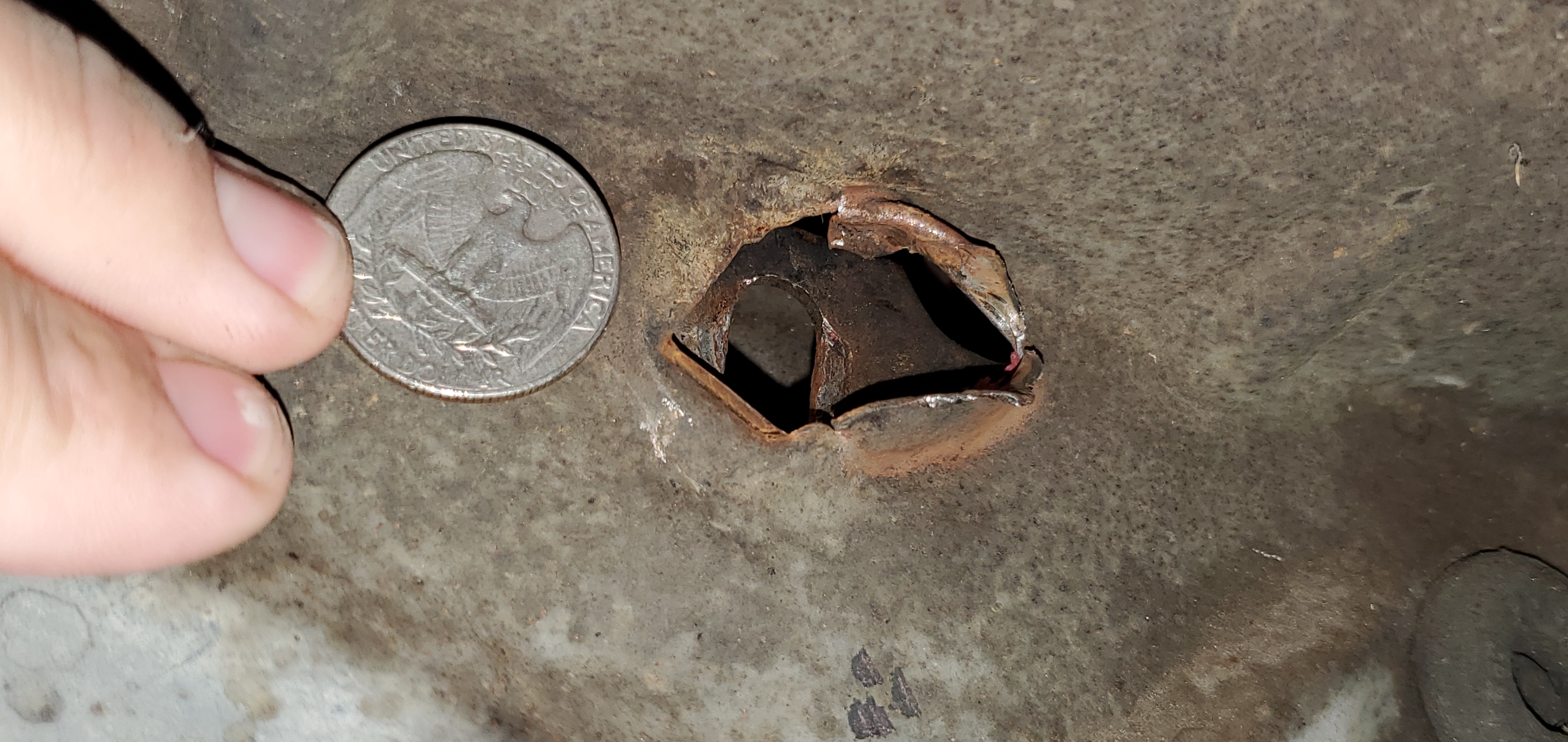
With a broken captive nut and a bent factory hinge, the car’s hood was removed. We drove it to a Bay Area fabrication shop owned by a friend who’s a car enthusiast and a welder by trade.
We placed the car on a lift and he assessed the damage. The nut had peeled back the sheet metal around it, leaving two rips in the steel. All things considered, it wasn’t a terrible rip--just way out of my repairing wheelhouse as a non-welder.
The first step was to clean the area surrounding the damage. Using a pneumatic rotary tool with wire-wheel and scotch-brite attachments, any dirt and rust around the tear was quickly shredded away.
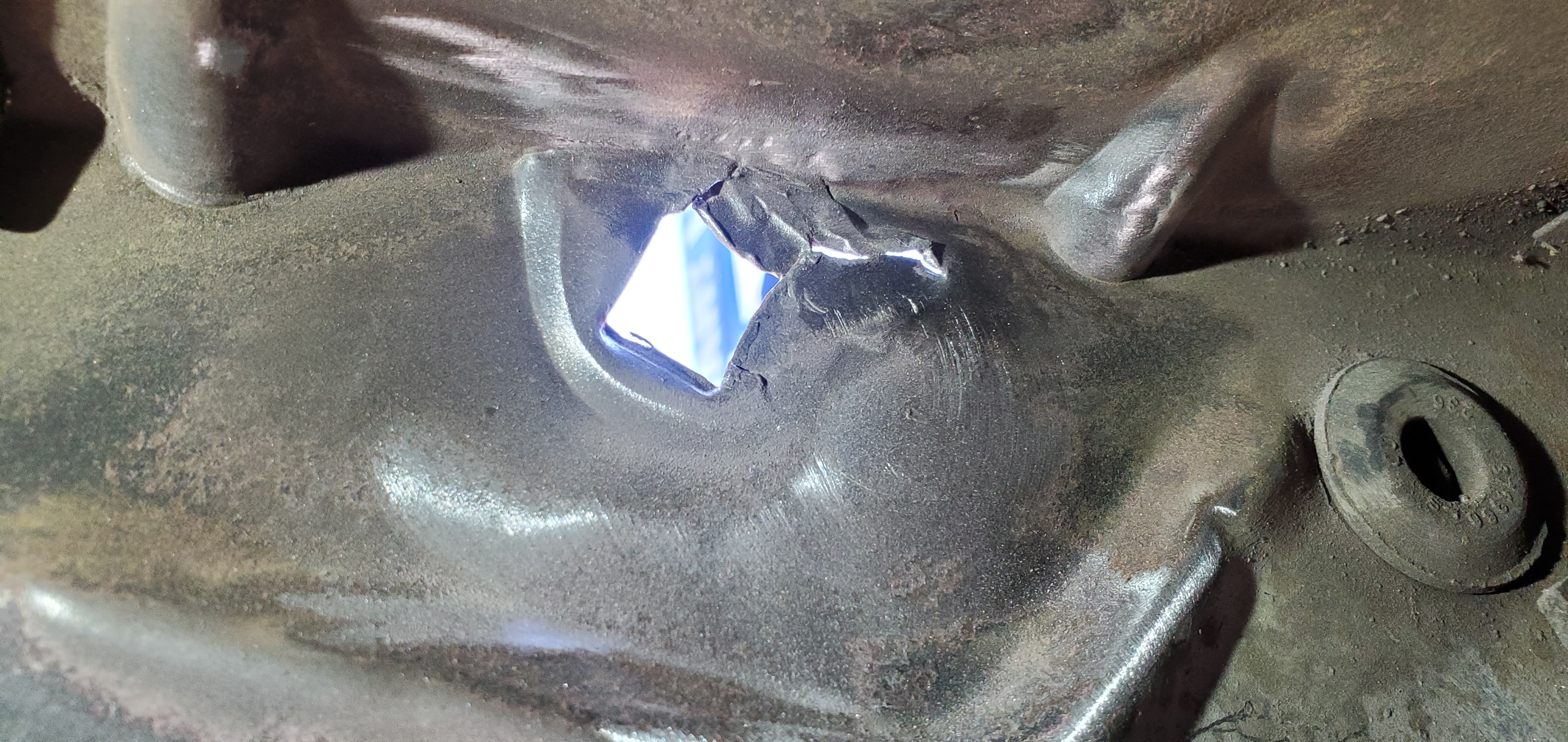
Using a body hammer--which is like a regular claw hammer, but with a longer claw and a head that flares out--the one of us who knew what he was doing started to bend the metal back into place. To my amazement, very little material was actually missing from the car. In a manner of minutes, the torn metal had been bent back into shape. The rectangular hole where the captive nut had sat was even still visible.
Once the hole was as good as it was going to be, the next step was to fill the tears using a TIG (Tungsten Inert Gas) welder. With one of us backing the hole with a sheet of copper and the other one welding--I’ll let you guess who was doing which job--dot by dot, the gaps started to fill in. After a while, we had a “booger-welded” surface that was ready for a grinder to make it flush with its surface.
After grinding back its welds, the rectangular fender hole was good-as-new and ready for the captive nut to be welded back into place. Luckily, the nut stayed in the hinge when it was ripped out of the fender during my hood-to-airbrake conversion. Once it was tacked back into place, the repair was complete, ready to be primed and painted.
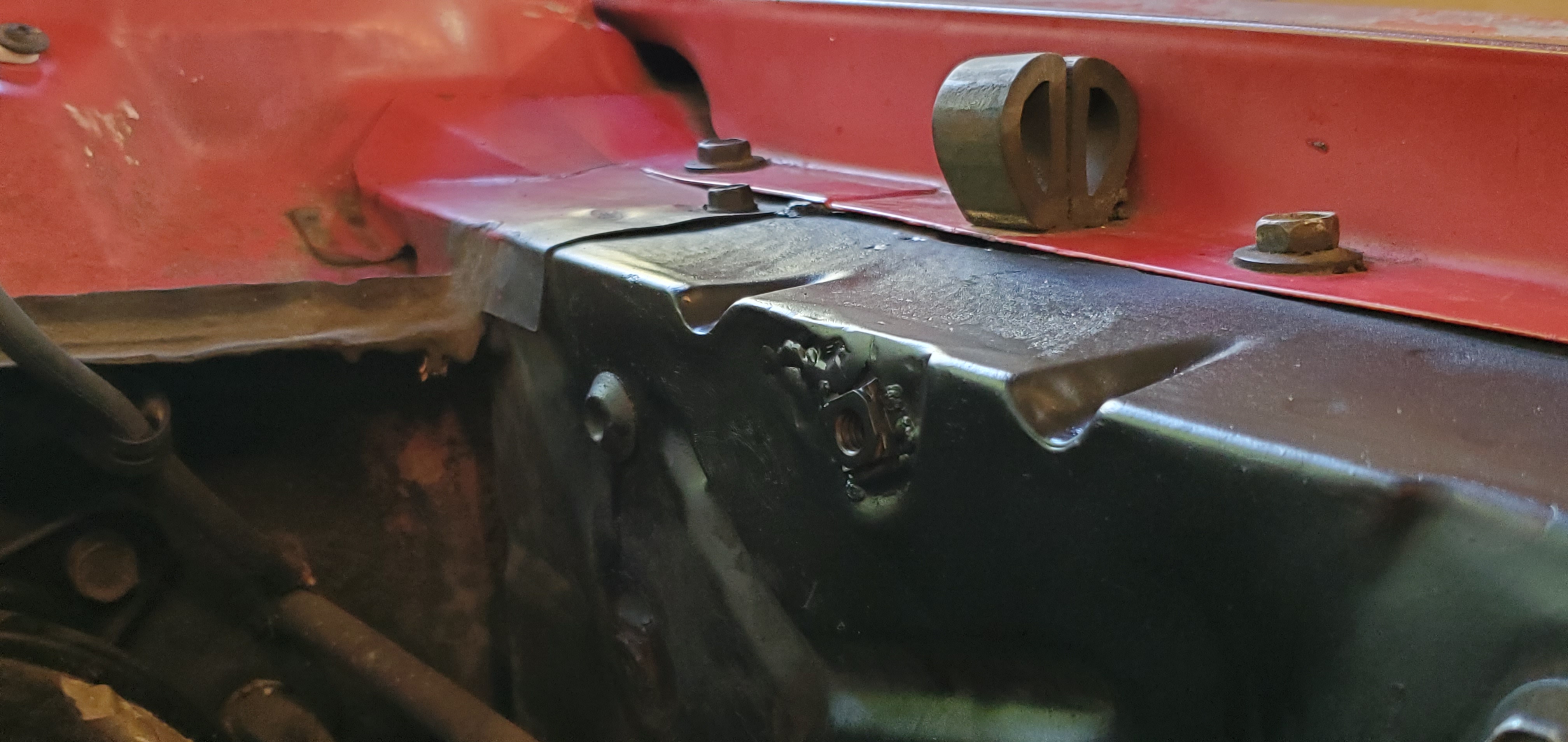
It’s like nothing ever happened, which is astounding when I consider that the whole repair only took a couple of hours. (That is, a couple of hours and two decades of experience in welding).
Just as quickly as I thrust the car into present-at-handedness, a friend with the right knowledge was able to kick it back into ready-to-handedness again. In fact, watching the torn sheet metal get folded back into place changed my outlook on damage, as a concept. I hope to learn to weld very soon, so that my repair skills can eventually back up that newfound outlook.